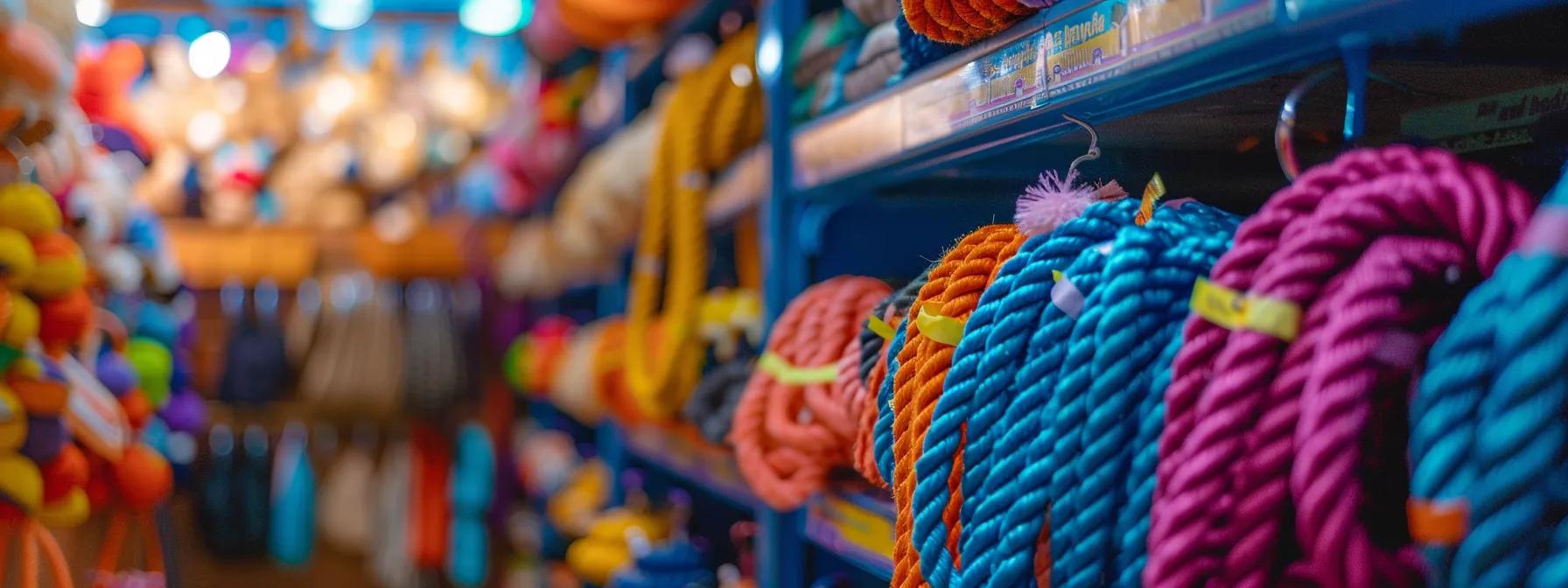
Nylon vs Cotton Rope Toys: Which Is Better?
Introduction
In the modern pet supply market, dog toys are essential for a pet’s overall health and happiness. Rope toys, valued for durability, dental benefits, and engaging play, are popular choices among pet owners. Two frequently compared rope toy types are nylon and cotton, assessed for design, longevity, safety, and eco-friendliness. This article analyzes materials, manufacturing processes, durability, safety, dental health support, and other factors to help pet supply buyers make an informed decision.
The article begins by defining nylon rope toys and their characteristics, then examines cotton rope toys, followed by an in-depth comparison of the two. It also explores how to choose the right rope toy based on a dog’s breed and chewing behavior, outlines best practices for toy safety and maintenance, and reviews eco-friendly, sustainable options. A section on where to find the best nylon and cotton rope toys supports pet owners at every step.
Overall, this article is designed for pet supply professionals and enthusiasts to assess which rope toy type best meets the diverse needs of active dogs while promoting dental health and environmental sustainability. The following sections focus on durability, sustainability, and pet safety in an evidence-based manner.
Transitioning into the main discussion, the analysis begins by exploring the unique features and benefits of nylon rope toys.
What Are Nylon Rope Toys and Their Key Benefits?
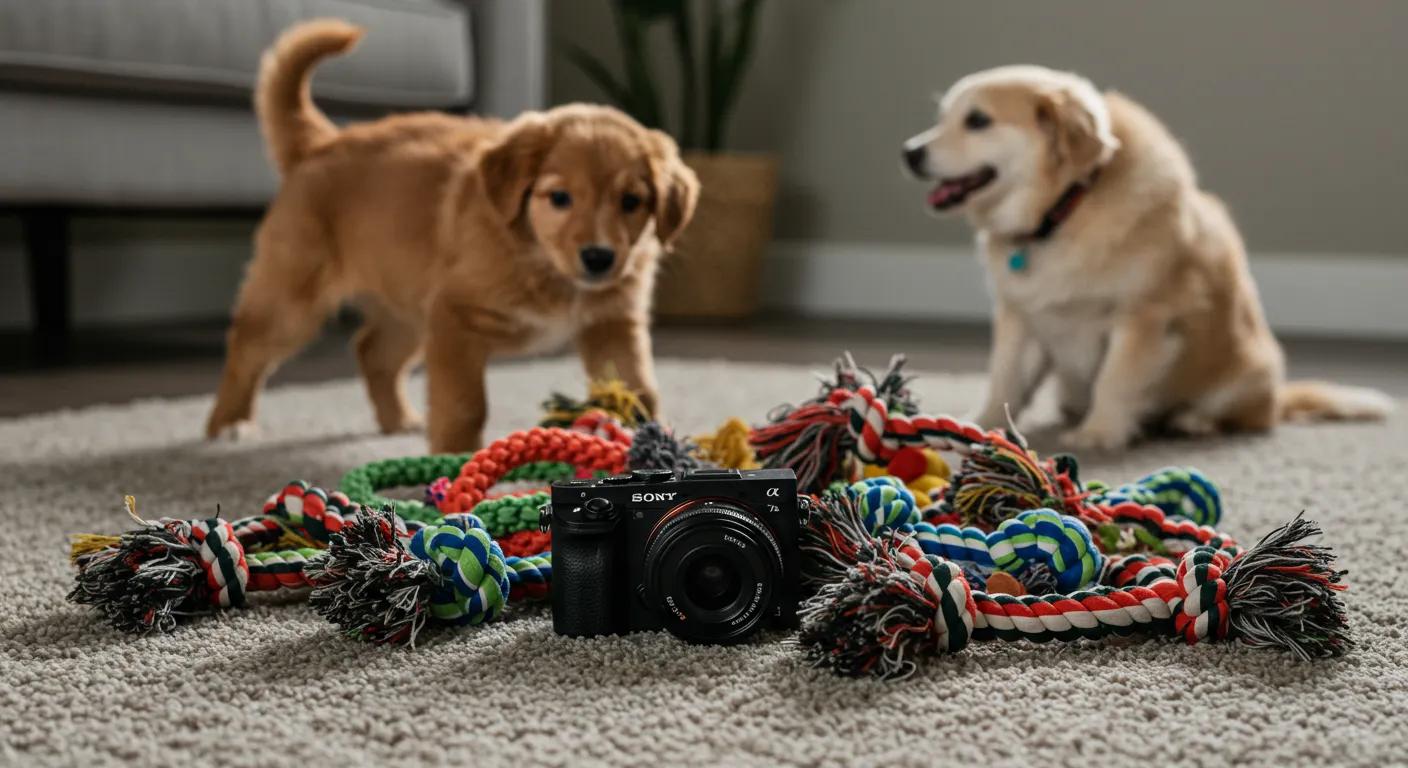
Nylon rope toys are manufactured using synthetic fibers known for their strength and resistance to wear. They offer a tough option suitable for aggressive chewers and active play. Nylon’s material properties allow it to withstand repeated tugging and chewing. High-tensile strength fibers and a robust design enable these toys to endure prolonged rough play, making them ideal for energetic dogs.
What Materials and Manufacturing Processes Are Used for Nylon Rope Toys?
Nylon rope toys are produced using synthetic polymers—primarily polyamide—that provide durability and strength. The production process involves extruding nylon into fibers that are twisted or braided into ropes, reinforcing the structure. Techniques such as thermal bonding and chemical treatments further enhance moisture, chemical, and UV resistance. Engineered to have a smooth surface, the fibers minimize friction and slow decomposition. This uniform synthetic material ensures consistent quality in each toy.
How Durable Are Nylon Rope Toys Compared to Other Materials?
Nylon rope toys are celebrated for exceptional durability. Their inherent strength means they rarely show fraying or breakage despite extended use. Tests have shown that nylon can endure up to 50% more mastication stress compared to natural fibers like cotton. Its resistance to water and chemicals makes the toy suitable for outdoor conditions and wet play, reducing the frequency of replacements and offering both economic and environmental advantages despite being synthetic.
What Safety Considerations Should You Know About Nylon Rope Toys?
Safety is paramount with any pet toy, and nylon rope toys are no exception. Although nylon is strong, vigorous play may cause fibers to break off, posing choking hazards or gastrointestinal risks. Regular inspection for damage or unraveling is recommended. Additionally, if damaged, the high-density nylon may leave sharp edges that could injure a dog’s mouth or digestive tract. Choosing nylon toys that have undergone safety testing and feature rounded edges can help minimize these risks. Pet owners should monitor play closely, especially with aggressive chewers, and follow manufacturers’ guidelines for appropriate toy sizes relative to breed, chewing habits, and age.
How Do Nylon Rope Toys Affect Your Dog’s Dental Health?
Nylon rope toys may provide dental benefits due to their abrasive surface, which can help reduce plaque and tartar buildup. The friction from chewing can mimic a mild brushing effect, aiding in the maintenance of healthy gums and teeth. Some studies indicate that regular chewing on abrasive toys like nylon ropes can decrease dental plaque levels over time. Additionally, designs featuring multiple strands or knots can further assist in cleaning teeth and massaging gums. However, these benefits should complement routine dental care, including vet check-ups and professional cleanings.
What Are Cotton Rope Toys and Their Main Advantages?
Cotton rope toys use natural fibers derived from cotton plants and offer an eco-friendly, softer alternative to synthetic toys. Pet owners who favor natural materials appreciate cotton for its biodegradability and ease of cleaning. With a pliable texture, cotton rope toys are ideal for gentle chewing and interactive play, particularly for puppies and dogs with sensitive gums. Cotton is naturally breathable and non-toxic, ensuring safety and hypoallergenic properties. As the natural fiber wears over time, it may fray, which can indicate the end of a toy’s life cycle, reducing the risk of accidental ingestion of small pieces.
What Is the Composition and Production Process of Cotton Rope Toys?
Cotton rope toys consist of 100% natural cotton fibers spun into yarn and then woven or braided into ropes. The process begins with cultivating and harvesting cotton fibers, followed by cleaning and carding to remove impurities. The fibers are spun into yarn using traditional or modern techniques to retain cotton’s natural strength and softness. Braiding creates a durable product that, despite being softer than synthetic options, offers adequate resistance to moderate chewing. The natural manufacturing process avoids extensive chemical treatments, and many manufacturers now use organic cotton to further reduce environmental impact.
How Eco-Friendly Are Cotton Rope Toys Compared to Nylon?
Cotton rope toys are more eco-friendly than nylon because cotton is natural and renewable. Organic cotton, in particular, is biodegradable, breaking down naturally after its useful life without leaving harmful residues. In contrast, nylon is derived from non-renewable petroleum products and does not biodegrade, contributing to long-term pollution. Additionally, producing cotton rope toys typically consumes less energy and water than manufacturing synthetic fibers, and they expose pets to fewer chemicals. These eco-friendly advantages make cotton rope toys a more sustainable choice for both pet owners and the environment.
Are Cotton Rope Toys Safer for Dogs Than Nylon?
Generally, cotton rope toys are considered safer for dogs due to their natural, biodegradable composition and softer texture. This gentler material minimizes the risk of damaging teeth and gums, making cotton ideal for puppies, small breeds, or dogs with sensitive mouths. Should a cotton toy fray or disintegrate, the resulting fragments are typically less abrasive and more digestible than nylon pieces. However, because cotton is less durable, it may not be ideal for extremely aggressive chewers. Regular inspections help ensure safety regardless of the toy’s material.
How Do Cotton Rope Toys Support Your Dog’s Dental Health?
Cotton rope toys support dental health by providing moderate abrasion during chewing, which can help remove plaque buildup and stimulate the gums. Their soft texture is gentle on teeth yet offers enough resistance to mimic natural chewing. Over time, as the fibers wear, they create a textured surface that acts like a mild toothbrush. While helpful, cotton toys should be used alongside regular dental care practices to maintain overall oral hygiene.
How Do Nylon and Cotton Rope Toys Compare in Durability and Safety?
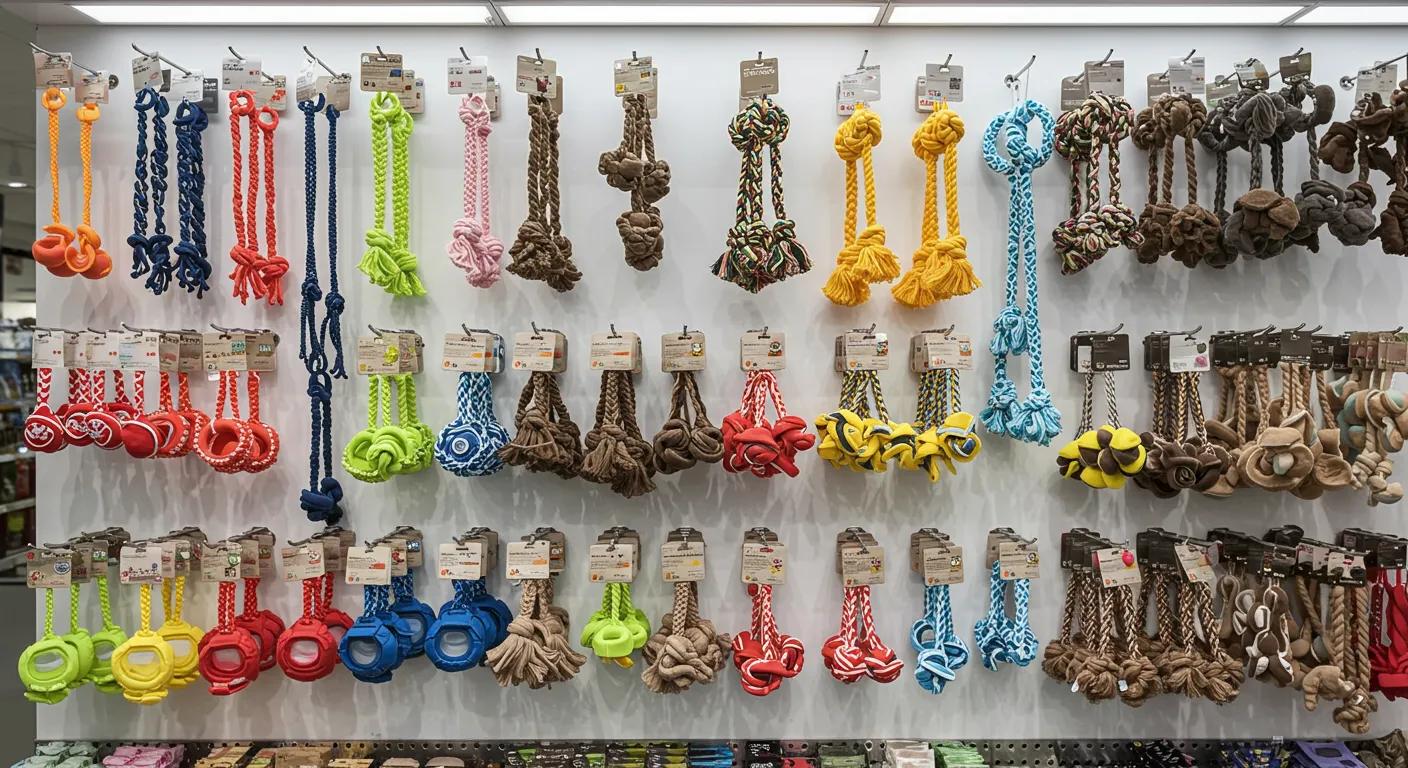
Durability and safety are the primary factors when choosing a rope toy. Nylon toys are engineered for strength and longevity, making them ideal for aggressive chewers. In contrast, cotton toys provide an eco-friendly, softer option suited for moderate chewing and sensitive mouths. Both materials have distinct advantages and limitations in handling chewing intensity and avoiding ingestion risks.
Which Material Offers Better Resistance to Wear and Tear?
Nylon rope toys are widely recognized for their exceptional resistance to wear. Their synthetic fibers withstand high mechanical stress, making them perfect for energetic dogs. In contrast, cotton toys, though resilient, tend to fray and degrade faster with repeated use. Testing shows nylon can endure approximately 50% more abrasion cycles than cotton. Additionally, nylon is less susceptible to moisture, which can weaken cotton over time. This makes nylon the preferred choice for longevity, even though its synthetic nature may be less eco-friendly.
What Are the Choking and Ingestion Risks for Each Material?
Both materials carry potential safety risks. Nylon toys may shed hard, sharp fragments if the material degrades, posing choking or gastrointestinal hazards. Cotton toys, being natural, tend to break into softer pieces that are less hazardous. However, cotton can deteriorate more quickly with heavy chewing, also posing risks if not monitored. Manufacturers address these risks through reinforced stitching and secure knot designs, and regular inspections are essential to avoid hazards.
How Do Both Materials Perform in Different Dog Chewing Styles?
The performance of rope toys varies with a dog’s chewing behavior. Aggressive chewers benefit from the tough, resilient nature of nylon, which withstands intense and prolonged chewing sessions. Moderate chewers and dogs with sensitive mouths may prefer the softer texture of cotton, which helps reduce dental wear. Matching the toy material to the dog’s specific chewing style enhances safety and extends the toy’s lifespan.
What Are the Environmental Impacts of Nylon vs Cotton Rope Toys?
Nylon, being synthetic, is produced from non-renewable petroleum sources and is not biodegradable. Discarded nylon toys contribute to long-term environmental pollution and landfill accumulation. Cotton toys, particularly those made with organic cotton, are biodegradable and decompose naturally. While cotton production may require significant water and pesticides, sustainable farming practices can reduce this impact. Thus, while nylon offers superior durability, cotton provides considerable environmental benefits to eco-conscious pet owners.
How to Choose the Right Rope Toy Based on Your Dog’s Breed and Chewing Habits?
Choosing the ideal rope toy involves considering your dog’s breed, size, age, and chewing behavior. Specific breeds have unique oral and chewing characteristics that influence the best toy choice. Aggressive chewers benefit from robust nylon toys, while puppies and small breeds often require gentler, softer options. Factors such as age and overall dental health also determine the most suitable toy.
Which Rope Toys Are Best for Aggressive Chewers?
For aggressive chewers, high-quality nylon rope toys are typically the best choice because of their superior durability and resilience. These toys withstand heavy chewing and constant tugging without disintegrating quickly. Look for features such as reinforced braiding, double stitching, and designs that minimize exposed ends that could be ingested. Specialized models for tough chewers often last longer under harsh chewing conditions.
What Rope Toys Are Suitable for Puppies and Small Breeds?
Puppies and small breeds benefit from rope toys that are softer and less dense than those designed for aggressive chewers. Cotton rope toys tend to be more suitable in this category as they offer gentle play stimulation without overstressing delicate gums and developing teeth. Smaller, bite-sized options help promote healthy chewing habits and dental development.
How Does Your Dog’s Age Influence Rope Toy Selection?
Age plays a significant role in rope toy selection. Puppies need toys that are safe, gentle, and stimulating for teething, while adult dogs require balanced toys that are durable yet support dental health. Senior dogs often benefit from softer materials that minimize abrasion and are easier to manipulate. Consulting with a veterinarian can help tailor the toy choice as a dog ages to ensure continued safety and comfort.
Can Breed-Specific Chewing Behaviors Affect Rope Toy Choice?
Yes, breed-specific chewing behaviors are important when choosing a rope toy. Larger breeds like Pit Bulls, Rottweilers, and Labrador Retrievers, known for powerful chewing, may need extra-strong nylon toys, while smaller breeds or those with delicate mouths, such as Chihuahuas and Poodles, might do better with cotton toys. Understanding these tendencies helps in selecting a toy that withstands play and fits the dog’s dental structure.
What Are the Best Practices for Rope Toy Safety and Maintenance?
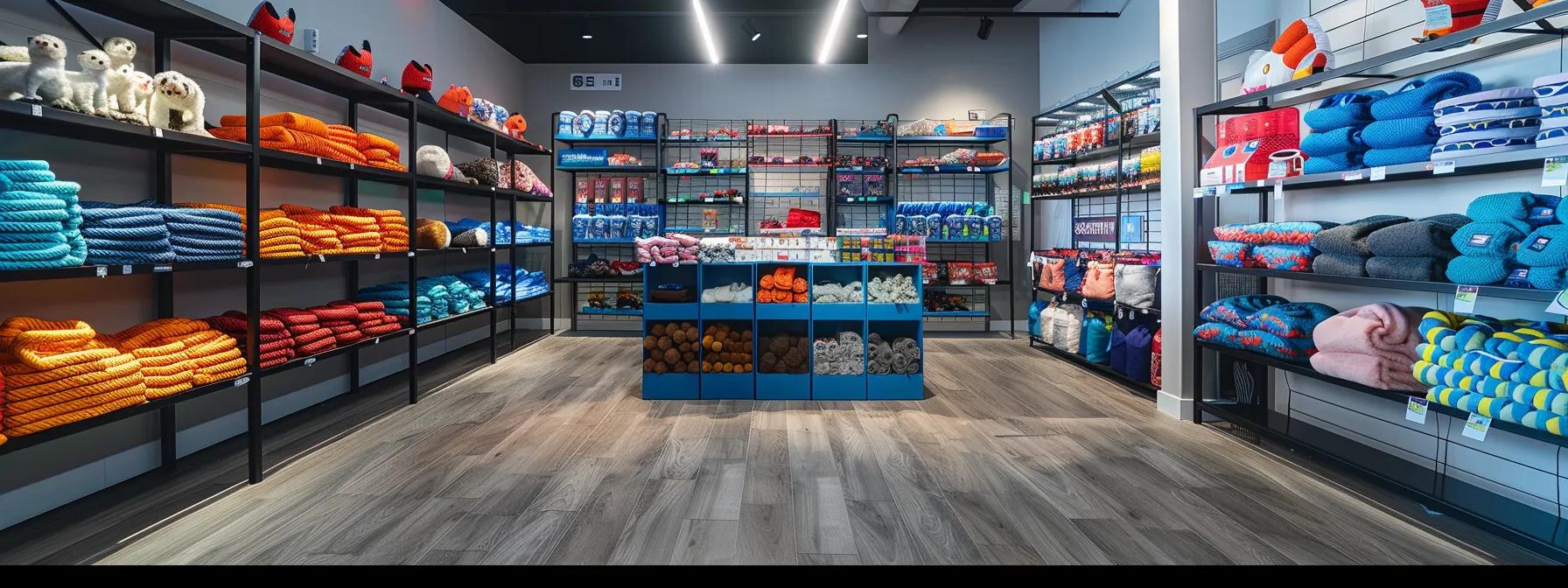
Maintaining the safety and longevity of rope toys requires regular inspection, cleaning, and proper storage. Both nylon and cotton toys can degrade over time due to wear and environmental factors, so following established maintenance practices is essential.
How Often Should You Inspect Rope Toys for Wear and Tear?
Regular inspection is vital for both types of toys. A weekly visual and tactile check can help identify fraying, unraveling, or thinning areas. For dogs that chew aggressively, inspections may need to occur twice weekly. Keeping a maintenance log helps track wear patterns and ensures timely replacement.
When Is It Time to Replace Your Dog’s Rope Toy?
Rope toys should be replaced when significant wear or damage is evident—such as extensive fraying, loose threads, or broken parts. For nylon toys, sharp edges from fraying fibers indicate an increased choking risk. If a cotton toy unravels entirely, it should be discarded immediately. Manufacturers’ guidelines on toy lifespan can also help determine when replacement is necessary.
What Are Safe Cleaning Methods for Nylon and Cotton Rope Toys?
Nylon toys should be hand-washed with mild soap and warm water, then air-dried away from direct sunlight to preserve the synthetic fibers. Cotton toys, being more absorbent, are best washed by hand or on a gentle cycle if permitted by the manufacturer. Ensuring the toys are completely dry before use prevents mold and bacteria buildup and prolongs their lifespan.
How Can Supervision Improve Rope Toy Safety?
Supervision during playtime is key to ensuring safety. Watching your dog while it plays with a rope toy allows you to spot early signs of damage or excessive wear, preventing potential ingestion of fragments. This is particularly important in households with multiple pets, where competition may lead to aggressive play. Active supervision helps reinforce safe play behaviors and prompts timely toy replacement.
What Are Eco-Friendly Alternatives and Sustainable Options for Rope Toys?
With increased environmental awareness, eco-friendly rope toy alternatives are becoming popular. While nylon offers durability, its synthetic nature raises sustainability concerns. In contrast, cotton toys are biodegradable and made from renewable resources. Manufacturers are also exploring other sustainable materials and production methods that reduce ecological impact while meeting safety standards.
Are There Biodegradable or Organic Cotton Rope Toys Available?
Yes, many biodegradable and organic cotton rope toys are available. These products are made using organically grown cotton without harmful pesticides or synthetic fertilizers. Organic cotton decomposes naturally over time without leaving toxic residues, and many brands use water- and energy-efficient production methods. This makes organic cotton toys a sustainable option for pet owners committed to environmental responsibility.
What Sustainable Materials Compete With Nylon and Cotton?
Several sustainable materials are emerging in the pet toy industry. Natural fibers like jute and hemp offer durability while being renewable and biodegradable. Bamboo fiber is another sustainable option known for its rapid growth and antimicrobial properties. Some manufacturers also use recycled polyester, which repurposes waste materials while maintaining performance. These alternatives cater to eco-conscious consumers looking for durable yet environmentally friendly options.
How Do Eco-Friendly Rope Toys Impact Your Dog’s Health and Safety?
Eco-friendly rope toys made from sustainable materials such as organic cotton, hemp, or bamboo reduce chemical exposure and are less abrasive on the teeth and gums. These materials often harbor fewer bacteria and provide a soft texture suitable for dogs with sensitive skin or allergies. Overall, eco-friendly toys offer a balance between sustainability and pet safety, making them an attractive option for environmentally conscious pet owners.
Where Can You Find the Best Nylon and Cotton Rope Toys?
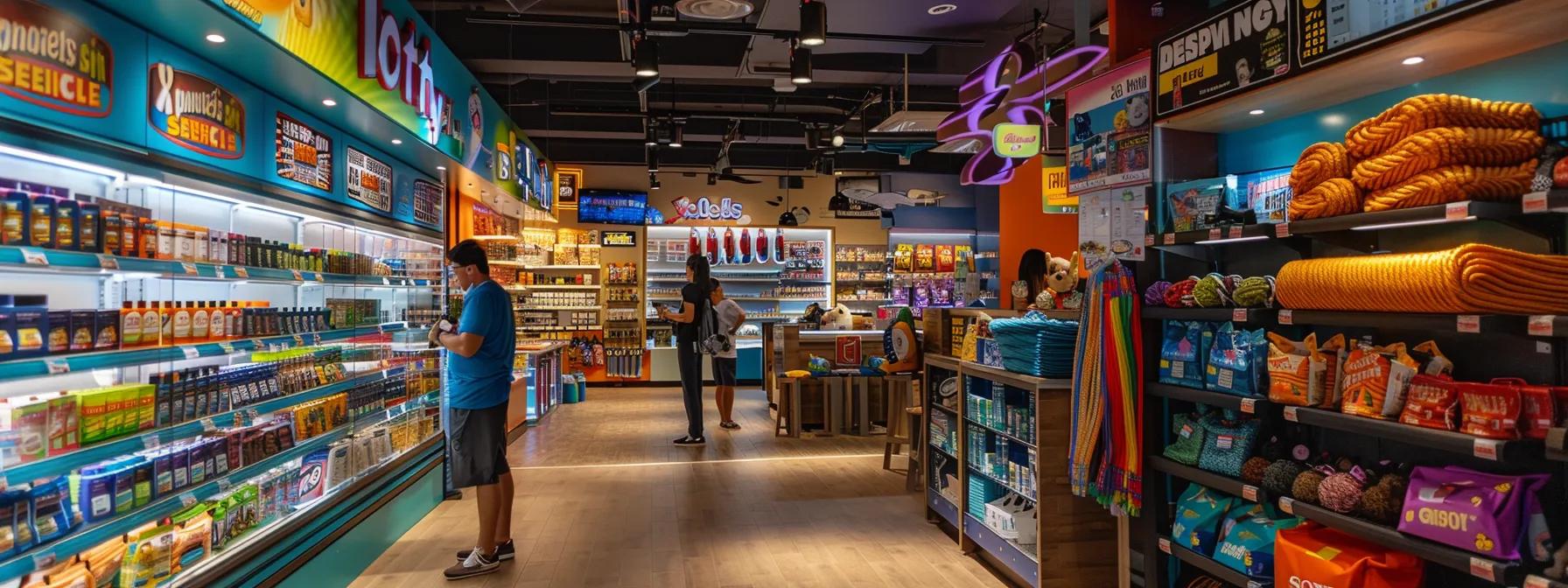
High-quality nylon and cotton rope toys can be found through reputable pet supply brands and online stores that meet strict safety and manufacturing standards. Discerning pet owners should seek products that have been independently tested for durability, safety, and environmental friendliness. Customer reviews, ratings, and safety certifications from organizations like ASTM or CPSC are good indicators of quality. Many specialized pet stores offer toys tailored for specific dog sizes and chewing behaviors, ensuring the best value and safety.
What Features Should You Look for When Buying Rope Toys Online?
When buying rope toys online, focus on durability, safety certifications, and detailed product descriptions. Important details include the material type, construction techniques such as reinforced braiding or secure knots, and design elements that enhance dental health. Clear images, thorough measurements, and customer reviews help assess suitability for your dog’s chewing strength. Transparency about eco-friendly practices and quality control further supports a good purchasing decision.
How Do Customer Reviews and Ratings Help Choose the Right Toy?
Customer reviews provide firsthand insights into the toy’s performance, durability, and safety over time. Reviews highlight strengths and weaknesses, such as fraying or choking risks, and often include breed-specific recommendations and practical tips for use. Star ratings and detailed feedback confirm whether a toy meets its advertised claims, helping prospective buyers choose products with proven performance.
Are There Certified Safe Rope Toys With Quality Standards?
Many rope toys come with safety certifications and meet strict quality standards. Products tested by organizations like ASTM or CPSC ensure that the toys have undergone rigorous checks for durability, toxicity, and choking hazards. Certification seals on product listings or packaging provide additional assurance of safety and are especially valuable for pet owners seeking reliable options.
Detailed List of Factors to Consider When Buying Rope Toys
Below is a detailed list of key factors to consider when choosing between nylon and cotton rope toys:
- Material Composition – Durability and Comfort: Nylon rope toys are made of synthetic fibers with high tensile strength, offering robust durability for aggressive chewers. Cotton toys, composed of natural fibers, deliver a softer chewing experience. Choose based on your pet’s chewing strength and behavior.
- Manufacturing Process – Quality and Consistency: Nylon toys typically undergo extruding and braiding techniques to ensure uniform strength, while cotton toys use traditional spinning and braiding to preserve natural texture. These production methods affect abrasion resistance and overall durability.
- Environmental Impact – Sustainability Considerations: Nylon is non-biodegradable and derived from petroleum, posing environmental challenges. In contrast, cotton—especially organic—decomposes naturally and is a renewable resource, offering a more sustainable option.
- Safety – Choking and Ingestion Risks: Both materials can pose risks if damaged; nylon may shed sharp fragments, while cotton may disintegrate quickly. Regular inspections and reinforced designs help mitigate these hazards.
- Dental Benefits – Impact on Oral Health: The abrasive quality of nylon can help reduce plaque, whereas the milder texture of cotton provides gentle cleaning. Select a toy that aligns with your dog’s dental health requirements.
- Chewing Style – Suitability for Aggressive vs. Gentle Chewers: Aggressive chewers benefit from the strength of nylon, whereas gentle chewers and puppies may do better with the softer texture of cotton.
- Cost and Longevity – Economic Considerations: Although nylon toys may have a higher initial cost, their longer lifespan can offer better long-term value. Cotton toys are generally less expensive but may need frequent replacement.
Table Comparing Key Features of Nylon and Cotton Rope Toys
Before making a decision, consider the following comparison table:
| Feature | Nylon Rope Toys | Cotton Rope Toys |
|---|---|---|
| Material | Synthetic polyamide fibers | 100% natural cotton fibers |
| Durability | High – withstands heavy chewing | Moderate – softer, may fray faster |
| Safety | Risk of shedding sharp fragments | Softer, biodegradable fragments |
| Dental Benefits | High abrasion reduces plaque | Gentle cleaning effect |
| Environmental Impact | Non-biodegradable, synthetic | Biodegradable, eco-friendly |
| Cost | Higher initial cost, longer lifespan | Lower cost, may require frequent replacement |
| Chewing Suitability | Best for aggressive chewers | Best for mild to moderate chewers |
Detailed List of Maintenance Tips for Rope Toys
Below are maintenance tips to ensure the safety and longevity of your dog’s rope toys:
- Regular Inspection – Check for Fraying: Inspect the toy weekly for any signs of fraying, broken strands, or loose knots. Daily checks during play can catch early wear.
- Cleaning – Safe Washing Techniques: Use mild detergent and warm water to clean both nylon and cotton toys. Hand washing is preferred; ensure the toy is completely air dried before reuse.
- Storage – Keep Toys Dry and Tidy: Store toys in a cool, dry place away from direct sunlight to prevent degradation and mold, especially for cotton-based toys.
- Rotation – Alternate Between Multiple Toys: Use several toys in rotation to reduce wear on any single toy and keep your dog engaged with variety.
- Supervision – Monitor Playtime: Always supervise your dog during play to notice any signs of damage, ensuring timely inspection and replacement.
- Replacement – Know When to Discard: Replace toys that show significant wear, such as extensive fraying or unraveling. Follow manufacturer guidelines to prevent safety risks.
- Frequency of Maintenance – Set a Routine: Establish a regular schedule for inspecting, cleaning, and storing toys to maximize their safe use.
Detailed List of Eco-Friendly Rope Toy Options
For pet owners seeking sustainable alternatives, consider these eco-friendly rope toy options:
- Organic Cotton Rope Toys – Natural and Safe: Made with organically grown cotton, these toys are fully biodegradable and reduce environmental impact while being gentle on sensitive mouths.
- Hemp Rope Toys – Durable and Eco-Conscious: Hemp offers robust durability similar to nylon but is natural and biodegradable, with a slightly rough texture that aids in dental cleaning.
- Bamboo Fiber Rope Toys – Sustainable and Antimicrobial: Lightweight and naturally antibacterial, bamboo fiber toys provide a smooth chewing experience and are a sustainable alternative.
- Jute Rope Toys – Biodegradable and Rustic: Jute offers high tensile strength and biodegradability, making it a rustic choice that decomposes safely with minimal chemical inputs.
- Recycled Polyester Rope Toys – Repurposed and Durable: These toys use recycled materials to reduce waste and energy consumption while offering good durability through additional treatments.
- Blended Fiber Toys – Combining Sustainability and Strength: Blended toys merge natural fibers with recycled synthetics, balancing eco-friendly properties with enhanced durability.
- Locally Sourced Handmade Rope Toys – Unique and Ethical: Handmade by local artisans using sustainable materials, these toys support local economies and offer high quality with natural dyes and non-toxic adhesives.
Frequently Asked Questions
Q: How Do I Determine if a Rope Toy Is Suitable for My Dog? A: Consider your dog’s chewing habits, breed size, and age. Aggressive chewers usually need durable nylon toys, while moderate chewers or puppies benefit from softer cotton options. Always check for safety certifications, inspect for wear, and follow manufacturer guidelines.
Q: Are Nylon Rope Toys Safe for Dogs with Sensitive Gums? A: While durable, nylon toys may be too abrasive for dogs with sensitive gums. In such cases, cotton rope toys or those designed for gentle chewing are preferable. Monitor your dog during play and consult your veterinarian if issues arise.
Q: Can I Use Rope Toys as a Substitute for Regular Dental Care? A: Rope toys help reduce plaque buildup through abrasion but should not replace routine dental care such as brushing and professional cleanings. Use them as a supplementary tool alongside regular veterinary dental check-ups.
Q: How Often Should I Replace My Dog’s Rope Toy? A: Replacement frequency depends on chewing intensity. Aggressive chewers may require new toys every few weeks, while moderate chewers might use them for several months. Regular inspection for signs of wear is essential.
Q: What Should I Do If My Dog Ingests Part of a Rope Toy? A: Seek immediate veterinary attention if you suspect ingestion, particularly if you notice vomiting, lethargy, abdominal pain, or changes in bowel movements. Early intervention is crucial to prevent complications.
Final Thoughts
In conclusion, both nylon and cotton rope toys offer distinct advantages in durability, safety, and environmental impact. Nylon toys are best for aggressive chewers due to their robust construction and resistance to wear, while cotton toys provide a gentler, eco-friendly option ideal for moderate chewers, puppies, and dogs with sensitive gums. Maintaining proper inspection, cleaning, and storage routines is key to ensuring pet safety and prolonging toy life.
By evaluating factors such as material composition, manufacturing quality, environmental impact, and safety features, pet owners can confidently select the rope toy that best meets their dog's needs. Whether you prioritize resilience or eco-friendliness, regular maintenance and monitoring will help safeguard your pet’s health. As the pet toy market evolves, staying informed about sustainable options will ensure your dog enjoys safe, engaging, and beneficial play.





